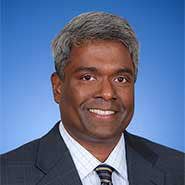NetApp Channel Partners Playing Key Role In Shift Toward All-Flash Storage, Driving Q1 Profit Growth

Solution providers are playing a big role in helping move NetApp's business toward its new strategic technologies, which contributed to solid growth in profitability during the storage company's first fiscal quarter of 2017, said CEO George Kurian Wednesday as the company disclosed its most recent quarterly financial results.
NetApp's move away from its mature legacy technology toward modern strategic offerings such as all-flash storage led to a slight drop in revenue for the quarter but helped boost profits.
"We work closely with the channel to accelerate our offerings to market," Kurian said during the company's quarterly financial analyst conference call. The channel accounted for 77 percent of NetApp's total revenue.
About 61 percent of NetApp's total product sales stemmed from its strategic offerings, which include the Clustered Data Ontap storage operating system, the OnCommand Insight storage resource management tool, certain cloud services, and the company's all-flash storage lineup of the branded E-series, the All Flash FAS, and the SolidFire lines. That compares to about 51 percent during the first fiscal quarter of 2016.
Kurian said NetApp is clearly making progress as it moves through a period of slow growth in macroeconomic terms towards its new strategic solutions. "We believe these actions will return us to profitability growth," he said.
Kurian also said NetApp is feeling "pretty good" when asked about the impact of , noting that NetApp is displacing EMC in very large accounts without naming any specific examples.
"We're building competitive offerings, and bringing our cost structures to be more competitive," he said.
NetApp reported total revenue for its first fiscal quarter 2017, which ended July 29, of $1.29 billion. That was down about 4 percent from the $1.34 billion the company reported for the first fiscal quarter of 2016.
For the Americas, revenue in the first fiscal quarter of 2017 was about $735 million, down from last year's $750 million.
NetApp reported fiscal first quarter 2017 earnings of $64 million, or 23 cents per share, up significantly from is loss of $30 million, or 10 cents per share, last year.
Non-GAAP earnings for the first quarter were $129 million, or 46 cents per share, up from last year's $89 million, or 29 cents per share.
NetApp's software and hardware maintenance and other services revenue fell over last year, but the company blamed that fall on the fact that first fiscal quarter 2016 had an extra week compared to the same quarter in 2017.
NetApp Wednesday also introduced Jean English as its new chief marketing officer. English joins NetApp from IBM where she most recently served as global vice president for IBM cloud marketing.
English is replacing Brian Bakstran, who has been acting as NetApp's chief marketing officer for nearly a year.
During the question-and-answer period of the conference call, NetApp executives were asked about the impact from some of the new strategic offerings on which the company is counting for future growth.
When asked about the implication of software-defined storage on NetApp's business model, Kurian said that from the customer perspective, the value of data management is in the software.
He also pointed out to several software-defined storage solutions in which NetApp has invested, including Ontap Select, a software-defined technology that allows Ontap 9, the latest version of Ontap, to be deployed on any VMware-qualified commodity server hardware.
He also cited the FlashForward Capacity licensing program for NetApp's SolidFire all-flash array that tears apart the array's software and hardware by pricing them separately to give customers flexibility in how they want to deploy their storage.
However, said NetApp Chief Financial Officer Ron Pasek, software-defined storage is still an immaterial part of NetApp's total sales.
Looking forward, Pasek said NetApp expects second fiscal quarter 2017 revenue to be between $1.265 billion and $1.415 billion. At the midpoint of that range, that would imply a 7-percent drop compared to the second fiscal quarter of 2016, which Pasek called a difficult compare. The company also expects non-GAAP earnings per share of 51 cents to 56 cents, he said. That compares to last year's 61 cents per share.